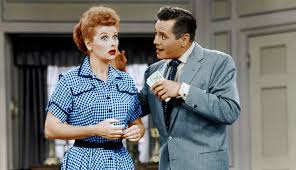Average WNBA Salary: Insights into Pay in Women’s Professional Basketball

The Women’s National Basketball Association (WNBA) is the premier professional women’s basketball league in the United States. Founded in 1996, the WNBA has made significant strides over the years, becoming a platform for some of the most talented and recognizable athletes in the world. However, one area that has consistently sparked debate is the disparity between the salaries of WNBA players and those in male-dominated leagues such as the NBA. This article will explore the average salary in the WNBA, how it compares to other sports leagues, the factors affecting players’ earnings, and the ongoing conversations surrounding pay equity.
Table of Contents
ToggleOverview of WNBA Salaries
As of the 2023 season, the average salary for a WNBA player was approximately $130,000. While this figure might seem modest in comparison to the millions earned by NBA players, it’s important to note that the salary structure of the WNBA differs significantly from that of the NBA. For example, the highest-paid WNBA players, such as Breanna Stewart, Sabrina Ionescu, and A’ja Wilson, can earn in the range of $200,000 to $250,000 annually in base salary. This is still far below the earnings of NBA stars, whose base salaries can exceed $30 million a year, not including endorsements and other sources of income.
WNBA Salary Cap System
The WNBA operates under a salary cap system, which dictates the maximum amount a team can pay its players in a given season. For the 2023 season, the WNBA salary cap was set at $1.42 million per team. This cap is divided among the players on each team, with the highest-paid players earning the most and others earning lesser amounts based on their contracts.
The salary cap is crucial because it impacts the overall salaries in the league. Teams must manage their budgets carefully, balancing the needs of their star players with the requirements of the supporting players. For a league with only 12 teams, and a smaller player pool compared to the NBA, the salary cap limits the amount of money available for player salaries, which contributes to the overall lower earnings in comparison to their male counterparts.
Factors Impacting WNBA Player Salaries
Several key factors influence the salaries of WNBA players:
- Revenue and Popularity: The WNBA generates far less revenue than the NBA. While the NBA is a global brand with vast media deals, endorsement contracts, and merchandise sales, the WNBA’s revenue is significantly smaller. According to reports, the WNBA’s revenue in 2021 was approximately $60 million, a fraction of the $8 billion generated by the NBA. This gap in revenue is one of the primary reasons for the salary disparity between male and female athletes in basketball.
- Endorsement Opportunities: Endorsement deals are a significant source of income for professional athletes, particularly those in high-profile sports. NBA players often sign multi-million-dollar endorsement deals with major companies like Nike, Adidas, and Under Armour, in addition to their salaries. WNBA players, however, have fewer endorsement opportunities, which means their overall earning potential is limited. However, players like Sabrina Ionescu and Sue Bird have been able to secure endorsement deals with top brands, but such opportunities are not as widespread across the league.
- International Play: Many WNBA players supplement their income by playing overseas during the off-season. Countries like Turkey, Russia, China, and South Korea offer significant contracts to top-tier American players. For example, players like Breanna Stewart and Diana Taurasi have been known to earn upwards of $1 million in overseas contracts, far exceeding their WNBA salaries. While this helps offset the lower salaries at home, it also highlights the disparity in pay between the WNBA and other leagues around the world.
- Team and Market Size: The financial success of a WNBA team can also influence player salaries. Teams in larger markets with bigger fan bases, such as the New York Liberty or Los Angeles Sparks, may have more resources available to pay players higher salaries. In contrast, teams in smaller markets or those with less financial backing may not have the ability to offer similarly competitive salaries.
- CBA Agreements: The collective bargaining agreement (CBA) between the WNBA players’ union (WNBPA) and the league is another key factor. In 2020, the WNBPA successfully negotiated a historic CBA that included salary increases, improved benefits, and improved working conditions. This deal was a significant step in the push for pay equity and resulted in a substantial increase in the salary cap, the introduction of new bonuses, and a commitment to higher player compensation over time. This agreement will help elevate the financial status of players over the course of the next several seasons.
Salaries by Role and Experience
Within the WNBA, there is a significant disparity in salaries based on the player’s role, experience, and status in the league. As mentioned earlier, stars like Breanna Stewart, A’ja Wilson, and Skylar Diggins-Smith can earn top-tier salaries of over $200,000. These players are considered among the best in the world and are often the face of their franchises, garnering attention and boosting team revenues.
On the other hand, players who are still early in their careers, or those who don’t have the same level of star power, typically earn much less. For example, rookies or players on training camp contracts may earn a base salary closer to $60,000, which is below the league average. Players who are not part of the main rotation or are signed to the minimum salary can also find themselves making lower wages, often in the range of $40,000 to $60,000 annually.
Veteran players with extensive experience and significant on-court contributions, such as Tina Charles and Sue Bird, are typically paid more than their younger counterparts. Many of these veterans also have additional income from endorsement deals, media appearances, and business ventures that increase their earning potential.
Pay Equity in the WNBA: Progress and Challenges
The issue of pay equity in the WNBA has been a topic of significant discussion in recent years. Many players have spoken out about the financial disparities between the men’s and women’s leagues. Despite the considerable achievements and talent displayed by WNBA athletes, the league’s players continue to face significant challenges when it comes to securing fair compensation.
The landmark 2020 collective bargaining agreement (CBA), which was ratified by the WNBPA and the league, was a pivotal moment in the fight for pay equity. The new deal brought an increase in average salaries, higher compensation for top players, and improved benefits, such as better travel accommodations and healthcare coverage. The CBA also included a commitment to increase the salary cap, which will gradually elevate the earning potential for all players over the course of the deal, which runs through the 2027 season.
While these changes have led to an improved financial outlook for players, many advocates for pay equity believe that there is still a long way to go. The disparity in revenue between the WNBA and the NBA remains a significant challenge, and until the WNBA’s overall financial position improves, salary increases may remain incremental.
Looking Forward: Can the WNBA Close the Salary Gap?
The question of whether the WNBA will ever be able to close the salary gap with the NBA is complex. While the increased exposure, better media coverage, and growing interest in women’s sports point to a more positive future for the league, there are several hurdles that must be overcome:
- Revenue Growth: As the WNBA continues to grow its audience, both domestically and internationally, there needs to be an increased focus on diversifying and expanding revenue sources. The league has begun to grow its television deals, and the increasing interest in women’s sports as a whole presents an opportunity to secure more lucrative partnerships and sponsorships.
- Endorsement Opportunities: For WNBA players to significantly boost their income, the league will need to create more opportunities for endorsement deals. The rise of social media influencers and platforms like Instagram has allowed athletes to directly connect with their fanbase, and it’s essential that WNBA players are given the tools and support to monetize their own brands.
- Investments in Women’s Sports: The continued investment in women’s sports, from grassroots levels to professional leagues, will be key in fostering an environment where female athletes can earn as much as their male counterparts. In particular, initiatives aimed at promoting the WNBA’s visibility, such as more prominent television coverage and greater media engagement, are crucial.
Conclusion
While the average salary in the WNBA has made considerable progress in recent years, it still lags far behind its male counterparts in the NBA. The 2020 collective bargaining agreement was a significant step toward closing the pay gap, but the challenges of lower revenue and fewer endorsement opportunities remain. As the WNBA continues to grow and garner more attention, there is hope that player salaries will continue to rise, and pay equity in professional basketball can be achieved. The future of the WNBA may be bright, but it will take continued advocacy, strategic growth, and commitment to equal opportunities for all players to truly level the playing field.





